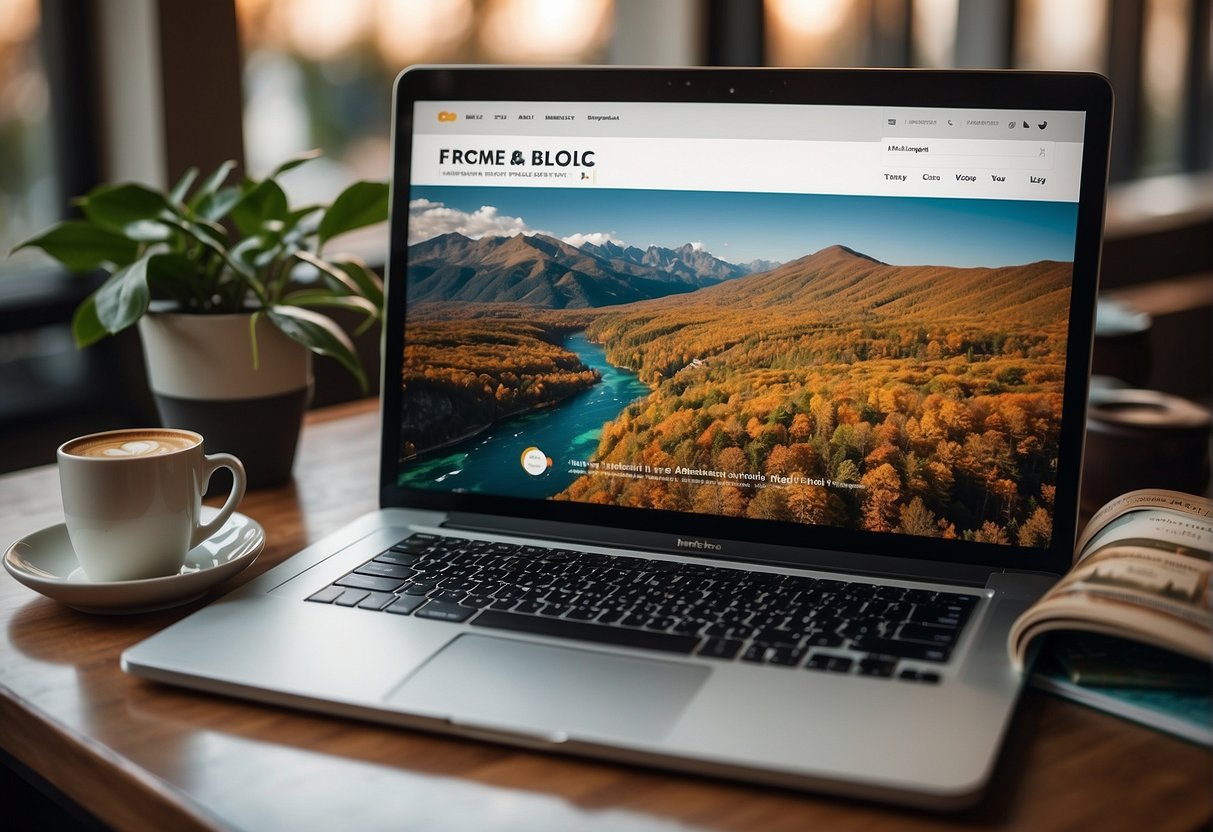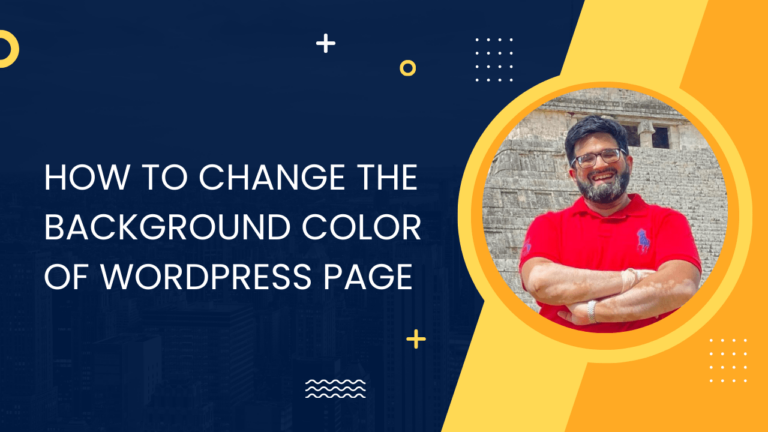Best WordPress Theme for Travel Blogs: Elevate Your Journey Narratives
Choosing the Right WordPress Theme for Travel Blogs
When diving into the world of travel blogging, your WordPress theme is your digital storefront—it needs to be inviting, functional, and reflective of your journey.
Factors to Consider When Selecting a Theme
Before picking a theme for your travel blog, you should evaluate several key aspects:
- Design: The aesthetic should be clean and align with the vibe of your travel content. Look for themes offering a variety of layouts and visual effects to captivate your audience.
- Responsiveness: Your chosen theme must be responsive, meaning it automatically adjusts to different screen sizes, be it desktops, tablets, or smartphones.
- SEO-Friendly: SEO optimization is crucial for visibility in search engine rankings. Ensure the theme is built with SEO best practices in mind to draw more traffic to your blog.
- Compatibility: Check the theme’s compatibility with essential plugins that enhance your site’s functionality, like contact forms, SEO tools, and social media integrations.
- Customization Options: A theme with a drag-and-drop page builder or an options panel allows for extensive customization without coding knowledge. Themes like Divi are known for offering such flexibility.
- Performance: A slow-loading theme can deter visitors. Opt for themes that are optimized for speed.
Free vs. Premium Travel Blog Themes
Contemplating whether to go with a free or premium WordPress theme? Here’s a breakdown:
| Aspect | Free Themes | Premium Themes |
|---|---|---|
| Cost | $0, risk-free | Varies, investment |
| Features | Basic necessities | Advanced capabilities |
| Support | Community support | Dedicated support |
| Updates | Less frequent | Regular updates |
| Customization | Limited options | Extensive options |
Free Themes:
- Offer the essential features you need to get started without added expenses.
- Might lack unique design elements, but they’re a good starting point if you’re on a budget.
Premium Themes:
- Generally come with more customization options and dedicated support, ensuring you have guidance if needed.
- Include additional features, such as built-in plugins and widgets, tailored for travel blogs.
- May improve the long-term success of your blog with ongoing updates and more professional designs.
Essential Design Elements for Travel Blogs

When setting up your travel blog, a few key design elements will serve as the foundation for your storytelling. You want your readers to find content easily and experience the adventure through your visuals.
Layout and Navigation
Your travel blog’s layout should be intuitive and straightforward. Aim for a user-friendly navigation menu, ideally one that’s transparent to blend seamlessly with your site’s design. This helps your visitors explore your blog without getting lost. Remember, the perfect layout balances aesthetics with functionality.
- Home Page: Use widget-ready areas to keep it organized.
- Menus: Place your navigation menu at the top of your page for easy access.
- Mobile Adaptability: Ensure the layout adjusts well to mobile devices for readers on the go.
Image and Video Integration
Travel blogs thrive on visuals. Your images and videos are what will hook your audience and let them experience the journey with you.
- Galleries: Incorporate photo galleries to showcase a collection of your travels. It’s about quality and variety.
- Sliders: Use sliders for a dynamic presentation of your featured destinations or blog posts.
- Video Content: Embedding video can give a lively glimpse into your travel experiences, offering a more immersive feel.
Images and video should be high-quality and optimized for web to ensure faster page loads. Your visuals are your storyteller – make them count!
Drupal Travel Blogger Features and Functionality

So, you’ve decided to use Drupal for your travel blog, huh? Smart move. Drupal’s flexibility and robust architecture can make your travel website function like a charm, especially with features geared towards travel bloggers.
Social Media Integration
Your travel tales deserve an audience, and what’s better to amplify your reach than social media? Drupal modules allow you to seamlessly connect your blog with social platforms. This means you can automatically push updates to your followers, let them share your content with ease, and even display your latest Instagram snaps right on your site. Plus, with Drupal, integrating social media feeds or sharing buttons is a walk in the park.
E-commerce Capabilities for Monetizing Your Travel Blog
Sure, traveling is about the experience, but who says you can’t make some dough on the go? Drupal hooks you up with some solid e-commerce capabilities. You can use modules to integrate WooCommerce with your Drupal site, transforming it into a storefront to sell merchandise or travel services. Meanwhile, features like a booking form can be a direct line for your readers to buy travel packages from you. And if passive income is more your style, Drupal’s compatibility with AdSense and other advertising platforms means you can rake in cash with ads on your site.
Remember, a seamless integration between your content, social channels, and monetization strategies is key for a successful travel blog. With Drupal, you’re pretty much ready to hit the digital road.
Theme Customization and Flexibility
When you’re picking out a WordPress theme for your travel blog, you want one that’s like a Swiss Army knife—versatile and ready for whatever design ideas you’ve got in your backpack. Themes with great customization and flexibility options let you put your personal stamp on your site, making it as unique as your travels.
Using Page Builders for Enhanced Design
Most top-tier themes come with a page builder. Think of it as your travel guide through the world of web design—no coding necessary. Page builders like Divi or Elementor provide drag-and-drop interfaces that make layout and design as easy as packing your suitcase. Here’s what you should keep an eye out for:
- Pre-built Layouts: They give you a head start with professionally designed pages that are ready to use.
- Modules/Elements: These are the building blocks of your page, letting you add text, images, sliders, and more, wherever you like.
Advanced Customization with Fonts and Colors
The right theme will let you play around with Google Fonts and unlimited colors until your site fits your vision:
- Fonts: Mix and match from the entire Google Fonts library to find the perfect typography for your blog posts.
- Colors: A palette with unlimited colors means no compromises on your site’s color scheme.
These tools put you in the designer’s seat, ensuring that your travel blog’s look and feel is just right.
Performance and User Experience
When scouting for the perfect WordPress theme for your travel blog, you want to nail two crucial aspects: performance and user experience. Your readers are looking for swift, seamless interactions, no matter the device they’re using.
Responsiveness and Mobile-Friendly Design
Your audience is on the go, and so should your travel blog. Ensuring your chosen theme is responsive means it will adapt beautifully to a variety of screen sizes, from desktops to smartphones. A mobile-friendly design isn’t just about looks; it’s about functionality on smaller screens. Clickable elements should be easy to navigate, and images need to resize without causing layout issues.
Loading Times and Lightweight Themes
Your readers crave fast-loading pages, especially when they’re eager to check out your latest adventures. Opt for themes labeled as lightweight, which indicates they are stripped of unnecessary features that could bog down loading times. Fast loading is critical in providing a top-notch user experience which helps with keeping readers engaged and reducing bounce rates. Remember, every second counts, so prioritize themes with optimized code that promise fast loading times.
Optimization and Integration
When setting up your travel blog on WordPress, you’ll want to ensure it’s not only looking the goods but also ticking all the right boxes for performance and accessibility. Smooth sailing for your site means a wider audience and better rankings.
SEO and Speed Optimization for Better Visibility
Your blog’s visibility on search engines hinges on SEO-friendly themes that are also speed-optimized. A brisk-loading site keeps visitors engaged and reduces bounce rates. Most notably:
- Divi: Known for its unlimited customization, it’s equally praised for its responsive design which adapts flawlessly to any device, contributing to site speed and SEO.
- Astra: This theme is lightweight, ensuring quick load times and comes SEO-ready, meaning you’re well set-up for those Google rankings.
Remember, faster sites keep both visitors and search engines happy.
WPML and Translation-Readiness for Global Reach
Embrace readers from around the globe by choosing themes that support WPML and are translation-ready.
- WPML (WordPress Multilingual Plugin): Go for themes compatible with WPML for seamless multi-language support.
For example:
- Avada: It’s translation-ready and works hand-in-glove with WPML, so you’re all set to charm globetrotters in their native tongue.
Using the right theme, your travel stories can reach every corner of the planet. Just make sure your theme is up to the task of letting everyone in on the journey, regardless of language.
Support and Resources

When you’re diving into a travel blog with WordPress, it’s crucial to have solid support and resources at your fingertips. This means access to around-the-clock customer service and a well-documented trove of guides and community insights.
Quality Customer Support
Your travel blog deserves a WordPress theme backed by stellar customer support. Look for themes that offer live chat, email, or ticket systems so you can get help whenever you need it. With 24/7 support, you won’t be left hanging if you hit a snag during off-hours. Some themes might include priority support, which can be a game-changer if time is of the essence.
Extensive Documentation and Community Forums
The best themes don’t just leave you with a download link; they provide a step-by-step guide and tutorials to walk you through setup and customization. Look for:
- Detailed Documentation: These are your comprehensive guides that cover everything from installation to tweaking design elements.
- Video Tutorials: Sometimes watching someone else do it is the easiest way. Video tutorials can be invaluable for visual learners.
- Community Forums: Here, you can find discussions, advice, and solutions from fellow users who have faced similar challenges.
Having these resources means you’re not working in isolation – you’ve got a wealth of shared knowledge to tap into.
Popular WordPress Themes for Travel Blogs
When you’re looking to launch or revamp your travel blog, choosing the right theme is crucial. It’s not just about aesthetics; it’s about functionality, ease of use, and the ability to captivate your audience.
A Showcase of Highly-Rated Travel Themes
Divi:
- Category: Multipurpose, with travel-specific layouts
- Reviews: Highly praised for visual effects and ease of customization
- Rating: Often top-rated for its versatility
Astra:
- Category: Performance-focused, suitable for various niches including travel
- Reviews: Known for speed and lightweight build
- Rating: Consistently high for performance and customizable options
OceanWP:
- Category: Versatile with extensions for enhanced functionality
- Reviews: Positive feedback for its flexibility and design choices
Tripster:
- Category: Travel-specific with a minimalist feel
- Reviews: Good for its clean layout and user-friendly design
The Traveler:
- Category: Tailored for travel storytelling
- Reviews: Often commended for its elegant content presentation
Veni:
- Category: Fashion and lifestyle intersect with travel
- Reviews: Noted for its sophisticated design
Blossom Travel:
- Category: Designed especially for travel bloggers with an emphasis on photo-friendly layouts
- Reviews: Well-received for being aesthetically pleasing and easy to navigate
A quick tip: While themes like Divi and Astra offer broad functionality, niche-specific themes like Tripster and Blossom Travel can provide tailored features that cater to your travel blog’s unique needs.
Theme Reviews and User Feedback
Before you commit to a theme, dive into the reviews and feedback from other travel bloggers. It’s not just about how eye-catching a theme is—look for aspects like:
- Ease of customization: Can you tweak the theme to your heart’s content without coding?
- Responsive design: Is the site going to look good on all devices?
- Page load speed: Will your readers be left waiting when trying to access your content?
- SEO friendliness: Is the theme optimized to help you rank in search engines?
Each theme will have its own set of strengths and weaknesses, as voiced by its users. For example, Divi may win on customization but might have a steeper learning curve. Meanwhile, Blossom Travel earns points for simplicity and being straightforward to set up. Take the time to read through the reviews to understand the theme’s real-world performance. Remember, your choice will shape your blog’s identity and user experience.




![How to Create a Custom Menu Link in WordPress: Quick Guide [Updated] 7 How to Create a Custom Menu Link in WordPress: Quick Guide [Updated]](https://everydayabdul.com/wp-content/uploads/2023/12/how-to-create-a-custom-menu-link-in-wordpress-min-768x432.png)

